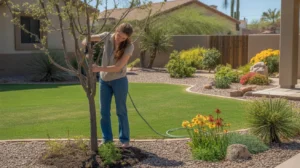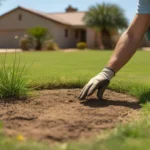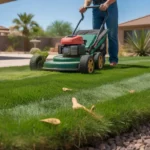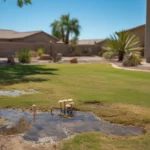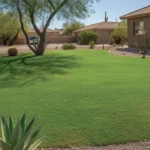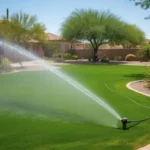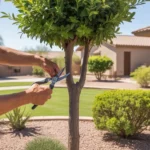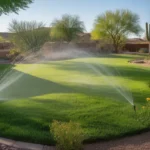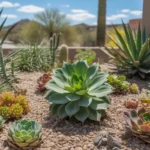As winter fades and spring blooms in Chandler, it’s time to turn your attention to your yard. With some targeted TLC, you can revive your lawn, trees, and plants from their winter slumber and set the stage for a lush, healthy landscape in the months ahead. As a Chandler homeowner, tackling key spring yard care tasks now will pay dividends all season long.
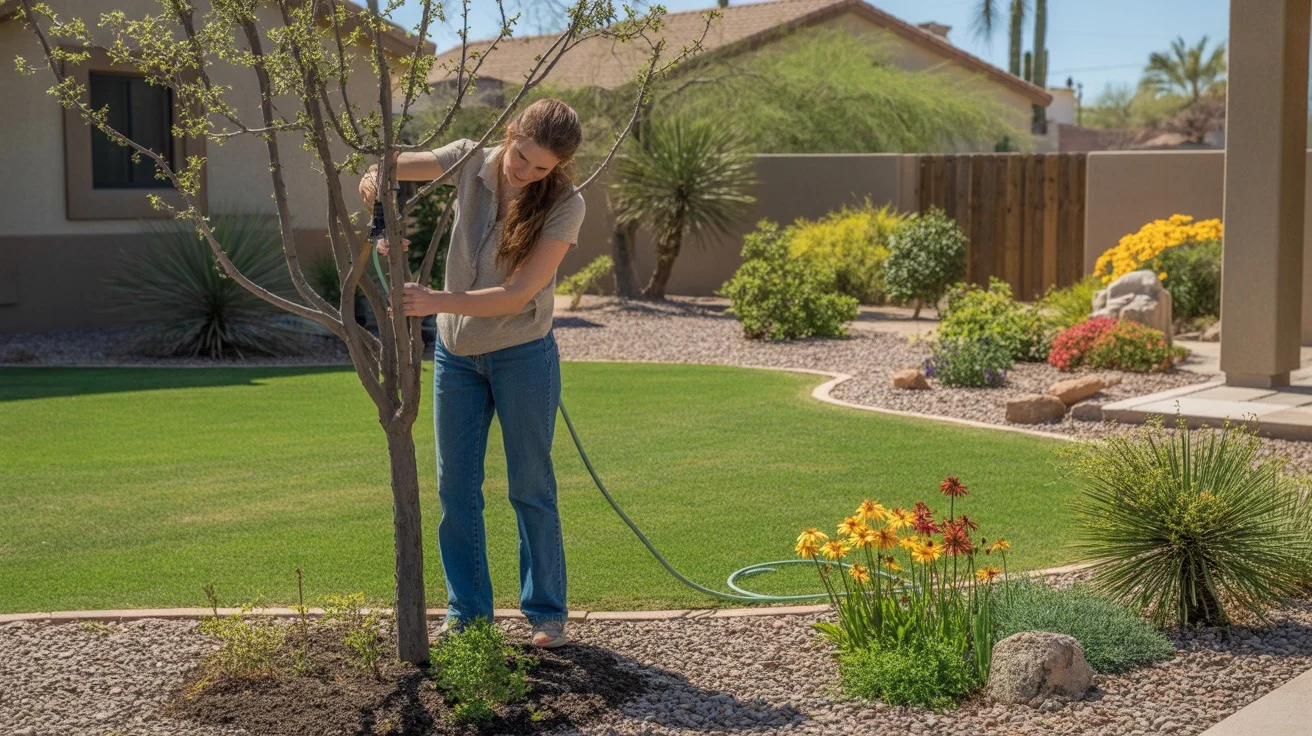
Spring Yard Cleanup: Where to Begin
Before you can dive into spring lawn care, some cleanup is in order. Start by clearing any remaining leaves, dead foliage, and debris that have collected over the winter months. This will give you a clean slate to work with and prevent dead organic matter from smothering your lawn.
Next, take stock of your trees and shrubs. Prune away any dead, damaged, or diseased branches to promote healthy growth. If you’re unsure about proper pruning techniques, consult a local arborist or landscaper for guidance – many Chandler professionals offer spring pruning services to get your yard in top shape.
Finally, give your lawn a once-over for any bare or patchy areas that need reseeding. Spring is an ideal time to sow new grass seed and allow it to establish before the heat of summer arrives. Choose a grass variety well-suited to Chandler’s climate, such as Bermuda or zoysia.
Weed Control: Tackling Spring Invaders
Spring weeds can quickly take over a Chandler lawn if left unchecked. Common culprits like dandelion, crabgrass, and spurge thrive in the mild spring weather. The key is to eliminate them early before they have a chance to spread and steal nutrients from your grass.
For small weed patches, hand-pulling or spot-treating with a post-emergent herbicide can be effective. However, if weeds are popping up throughout your lawn, you may need to apply a broadcast treatment. Look for selective herbicides that target common broadleaf weeds without harming your grass. Always follow package instructions carefully and apply on a calm day to prevent drift onto other plants.
In addition to post-emergent control, consider applying a pre-emergent herbicide in early spring to prevent new weed seeds from sprouting. Timing is crucial – aim to apply when soil temperatures approach 55°F, typically in late February to mid-March in Chandler.
Fertilizing for a Lush Lawn
After lying dormant all winter, your Chandler lawn needs a nutritional boost to kick-start spring growth. However, proper timing and application are essential to avoid stressing your grass.
Wait until your lawn is actively growing and has been mowed at least once or twice before fertilizing. For most Chandler lawns, this means holding off until late April or early May. Choose a balanced, slow-release fertilizer formula designed for your grass type, and always follow the recommended application rate.
When applying fertilizer, use a calibrated spreader to ensure even coverage, and avoid over-applying, which can burn your grass. Water your lawn well after fertilizing to help the nutrients reach the roots. A deep, thorough watering is better than several light sprinklings.
Irrigation Tune-Up: Adjusting for Spring
As spring weather patterns shift in Chandler, so should your irrigation schedule. Grass and plants typically require more water in spring than in winter, but overwatering can be just as damaging as underwatering.
Start by checking your irrigation system for any leaks, clogs, or malfunctioning sprinkler heads that may have developed over the winter. Make repairs as needed to ensure even, efficient coverage.
Next, adjust your watering schedule to account for spring conditions. A good rule of thumb is to water deeply and infrequently, allowing the soil to dry out slightly between waterings. Aim to water in the early morning hours when evaporation is minimal. Consult Chandler’s recommended watering guidelines for your grass type and soil conditions to develop an appropriate spring irrigation plan.
Mulching for Moisture Retention
Spring is a great time to refresh the mulch in your garden beds and around your trees. A 2-3 inch layer of organic mulch, such as shredded bark or wood chips, helps retain soil moisture, suppress weeds, and regulate soil temperature.
When mulching around trees, create a donut-shaped ring extending about 3 feet out from the trunk, keeping the mulch a few inches away from direct contact with the bark to prevent rot and disease. For garden beds, apply an even layer of mulch between plants, taking care not to bury any stems or foliage.
Not only does mulch provide practical benefits, but it also gives your Chandler yard a polished, well-maintained appearance. Choose a mulch color and texture that complements your landscape design for a cohesive look.
Planting for Spring Color
Spring is the perfect time to add a pop of color to your Chandler yard with seasonal annuals and blooming perennials. Some top picks for the area include:
- Pentas – These low-maintenance, heat-loving flowers bloom in shades of red, pink, lavender, and white.
- Angelonia – Also known as summer snapdragon, angelonia produces spikes of colorful flowers all season long.
- Gaillardia – Blanket flower is a tough, drought-tolerant perennial that blooms in vibrant shades of yellow, orange, and red.
- Gomphrena – Globe amaranth adds whimsical pom-pom shaped flowers in purple, pink, and white to borders and containers.
When selecting plants, consider their mature size, sun and water requirements, and overall compatibility with your existing landscape. Group plants with similar needs together for easier care, and don’t forget to amend the soil with compost or other organic matter before planting to improve drainage and fertility.
By tackling these essential spring yard care tasks, Chandler homeowners can revive their outdoor spaces and enjoy a beautiful, thriving landscape in the months ahead. A little extra effort now will go a long way in creating a lush, welcoming oasis you can enjoy all season long.

